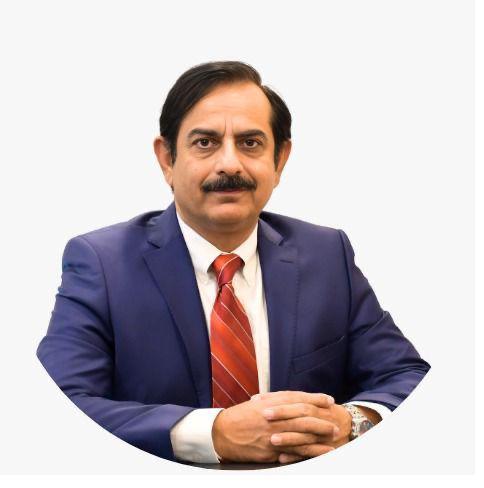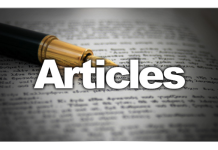By Imran Ghaznavi
It began quietly, with a few lines slipped into an amendment bill in 2023. But those few lines may come to define the next decade of Pakistan’s media story. The Pakistan Electronic Media Regulatory Authority (PEMRA) was given sharper teeth, a wider reach, and a new vocabulary for an old problem: misinformation.
Inside Parliament, the discussion was brief. Outside, the noise was loud. Media owners feared censorship. Lawmakers called for “responsible journalism.” Civil society worried about “information control.” Yet behind the debate, a deeper shift was taking shape, one that mirrors the world’s uneasy struggle to regulate truth in a digital age.
The Law That Rewired the Regulator
For two decades, PEMRA was a gatekeeper. It licensed channels, issued warnings, imposed fines. Its founding law from 2002 was written for a simpler time satellite dishes, not smartphones; broadcasters, not bloggers. Then came the 2023 amendments.
For the first time, Pakistani law defined misinformation and disinformation. It raised penalties for broadcasting false or harmful content. It promised protection for journalists’ salaries and working conditions. And it created stricter checks before any channel could be taken off air.
Inside PEMRA headquarters, the message was clear: this was not business as usual. The regulator was being asked to do something regulators everywhere are struggling with, manage a borderless, algorithm-driven information space without crushing free speech.
In theory, this was reform. In practice, it was the start of a new battle i.e. one between authority and autonomy, regulation and trust.
The New Reality
In Pakistan’s sprawling media landscape, the old boundaries are gone. A talk show clip posted on YouTube reaches more viewers than its live broadcast. Anonymous Twitter accounts can move markets, topple reputations, or spin conspiracies within hours.
And yet, amid all this chaos, viewers still expect PEMRA to act. To draw the line between fair debate and fabrication. Between criticism and incitement. Between expression and exploitation.
A senior regulatory expert put it this way: “They can’t regulate speed with a law written for paper.” He wasn’t being poetic. He was being honest.
That’s where the 2023 amendments tried to help expanding PEMRA’s legal reach into digital territory, aligning it with global practices seen in the UK’s Ofcom or Singapore’s Infocomm Media Development Authority.
But the challenge runs deeper than new powers. It’s about how those powers are used and how much trust the industry, the journalists, and the public have in the regulator’s fairness.
The Tightrope: Freedom vs Responsibility
International experience tells us that credibility, not control, makes a regulator effective. The UK, Australia, Malaysia, and Indonesia have moved toward co-regulation, a balance between government oversight and industry self-discipline. PEMRA now faces the same crossroads.
To make the law work, it must shift from being seen as a watchdog with a stick to a referee trusted by all sides. That means publishing clear guidance on what constitutes “disinformation.” It means adopting a ladder of proportional sanctions, correction, warning, fine, suspension, only then cancellation.
It also means creating space for self-regulation. A National Media Ethics Council, jointly led by PEMRA and industry representatives, could turn compliance from compulsion into culture.
That’s how successful regulators survive not by silencing dissent, but by setting rules that everyone understands and can live with.
What Changed and Why It Matters
One of the quiet but meaningful shifts in the 2023 amendment was about people, not power. For years, journalists complained about unpaid salaries and arbitrary terminations. The new law mandates timely payments and gives PEMRA limited oversight on labor rights in licensed organizations.
It was a signal, regulation isn’t only about punishing broadcasters; it’s about professionalizing them.
Then came another reform: transparency. The new law demands that enforcement decisions, especially those involving penalties, follow multi-member processes. No more single signatures that could be seen as politically motivated.
For a regulator often accused of selective action, this procedural safeguard could rebuild some of the trust that was lost in the noise of past controversies.
The Challenges No Law Can Solve
Even with a modern law, PEMRA faces a storm. First, the jurisdictional dilemma: most harmful content today originates online, often from foreign-based platforms beyond Pakistan’s legal reach. Regulation without cooperation will not work.
Second, the speed dilemma: misinformation moves faster than any regulator can react. By the time PEMRA investigates, the rumor has already become a belief. The only answer is technology i.e. AI-based media monitoring, partnerships with fact-checkers, and faster verification pipelines.
Third, the perception dilemma: every enforcement action risks being called censorship. The solution isn’t silence; it’s transparency. Every decision must be explained, published, and appealable.
And finally, the capacity dilemma: regulating a hyper-connected media ecosystem requires not just laws but people who understand algorithms, audience behavior, and digital economics. That’s a tall order for a bureaucracy built around analog broadcasting.
The Opportunity Hidden in Chaos
Yet within these challenges lie opportunities, for PEMRA and for Pakistan.
If it can implement these reforms wisely, PEMRA could become a regional model in South Asia for balanced digital governance. It could set benchmarks for ethical journalism and digital responsibility that neighboring regulators might follow.
Imagine a PEMRA that partners with universities to integrate media literacy in curricula. A PEMRA that publishes quarterly transparency dashboards showing fines, violations, and resolutions. A PEMRA that celebrates ethical journalism, not just punishes violations. Such a regulator would be feared less and respected more.
The Road Ahead
Lawmakers and industry leaders now hold the pen. The question is not whether PEMRA should regulate, but how it should regulate in an era where every citizen with a smartphone is a broadcaster.
A few steps could make all the difference: Requiring PEMRA to issue plain-language guidance within 90 days of any new regulation. Establishing an independent review panel for appeals. Funding a Digital Monitoring Unit equipped with AI tools and trained analysts. Formalizing a co-regulation charter signed by broadcasters and digital platforms.
These are not bureaucratic luxuries. They are democratic necessities.
The Final Test
In the end, the test for PEMRA’s 2023 law won’t be in the text of the statute. It will be in how it’s used, whether it protects truth without punishing opinion, whether it enables journalism without empowering propaganda, whether it builds trust without breeding fear.
Bob Woodward once said, “The truth is too important to be left to chance.” In Pakistan’s noisy information battlefield, truth now needs both courage and regulation, but regulation that understands freedom is not its enemy, it’s its foundation.
PEMRA’s challenge in 2025 is exactly that: to regulate without suffocating, to lead without dominating, and to rebuild trust in an age where every voice can be amplified, and every fact can be doubted.
“That is not just a test for PEMRA. It is a test for Pakistan’s democracy itself”.
PEMRA’s challenge is clear: to regulate without suffocating, to lead without dominating, and to restore public trust in a time when every voice can echo, and every fact can be doubted.













